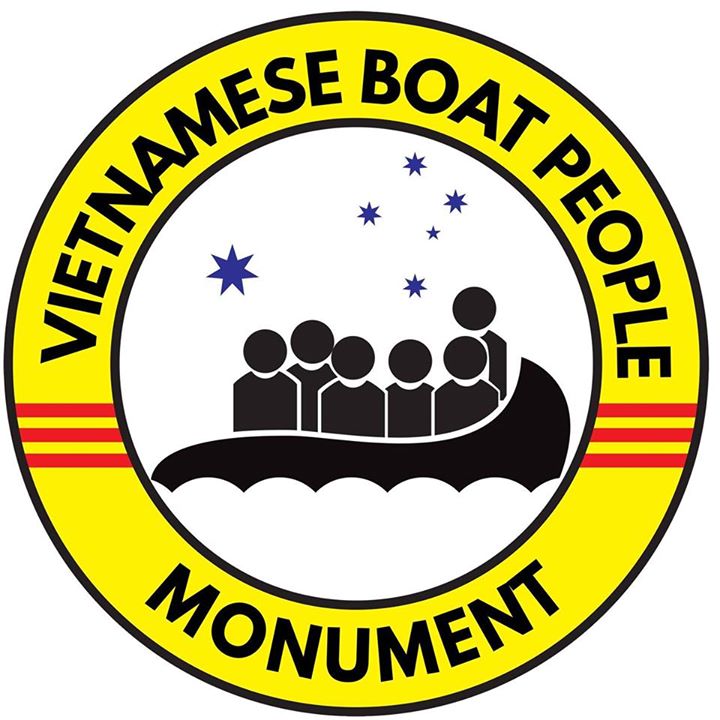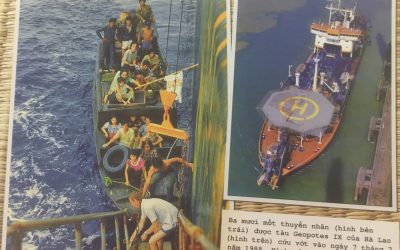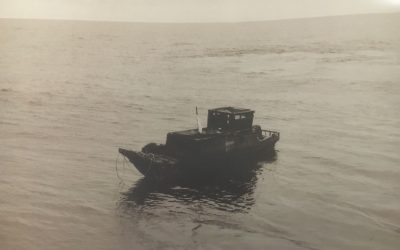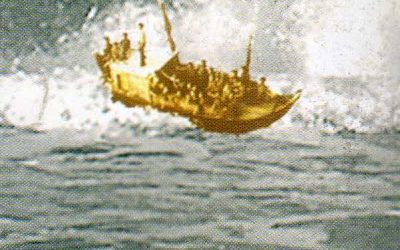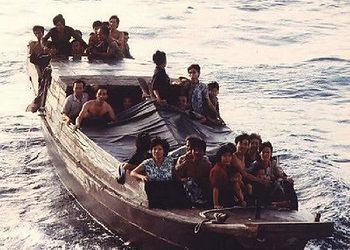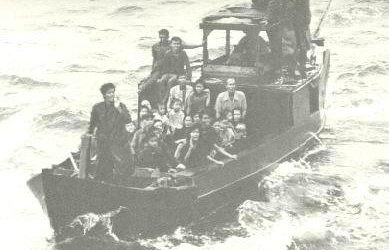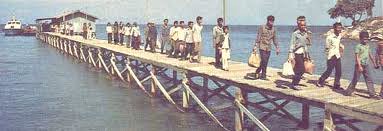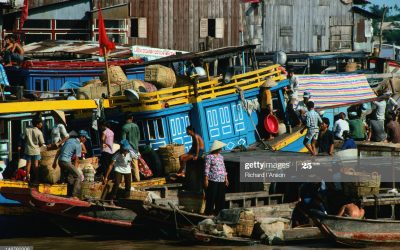Vietnamese Artists
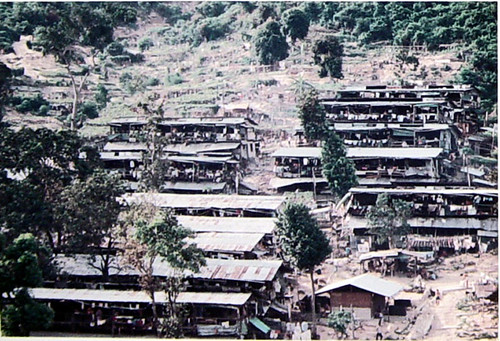
Working with Vietnamese refugees in Galang camp in Indonesia was one of the most memorable experiences of my 16 years career with UNHCR. From 1991 to 1993, I was the Technical Officer, responsible for the daily upkeep and maintenance of the Galang Camp infrastructure. At that time, there more than 15,000 refugees residing at Site 1 and Site 2 respectively.
During my time on Galang, I came to know Vietnamese refugees well. I especially enjoyed working with refugees attached to the Technical Office and a large number of support staff. The refugees were intelligent, innovative and, above all, hard working. Their often tragic circumstances and endured hardship, their individual performance, as well as the support provided to the camp communities by organisations including UNHCR and Camp authorities must be put on record. It was their resilience and belief in a positive outcome for their situation that kept them positively engaged, regardless of how difficult their predicaments were. I have tremendous respect for their forbearance.
When I was in Galang, it was a very hard period for many because of the screening process. Most of those who were there at that time had to prove they were genuine refugees when screened. Otherwise, they would be repatriated back to Vietnam. Many of them stayed in the Galang Camp as long as six years, and then were repatriated. Sadly, this often led to tragic outcomes as refugees chose to take their own lives rather than return. Many of these refugees were young. In fact, the Technical Office ran a carpentry workshop where coffins were made.
Generally, most of refugees had much time on their hands. There was hardly anything to do in the camp to keep their minds occupied and there was constant worry about their uncertain future. All they did was sit around, worry and wait. The psychological pressure was palpable. Keeping refugees occupied purposefully meant creating diversions from their worries, especially for the younger refugees.
One of the interventions that worked quite well was to find and engage artists. I love art and as I was told by my staff that there were professional artists among the refugees, I decided to give it a try. So, I spread the word that I was looking for artists. Soon, many came to see me, young and old. As a result, I assembled a team of the seven most promising artists. I provided art supplies and relevant literature or printed posters of the masters and they painted as part of their daily routine, engaged in art and enjoying working creatively. An art exhibition was held on Galang, which was also visited by various visiting delegations. Some paintings were sold and the proceeds given to the artists.
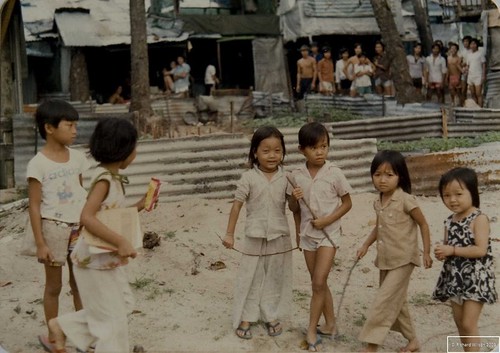 Among them was An Nguyen, who now lives in Western Australia. I will never forget our first encounter; An’s friend brought him to me. He was in his twenties and very shy. We exchanged a few words through an interpreter. He said that he had never painted before, but in his heart, he knew that he could paint. I was so touched by An’s words that I gave him a framed canvas of A4 size, a few brushes, oil paints and a copy of Dali’s masterpiece ‘Woman with a Head of Roses’. I asked An to come back in a week to show me how well he had managed to copy Dali’s painting.
Among them was An Nguyen, who now lives in Western Australia. I will never forget our first encounter; An’s friend brought him to me. He was in his twenties and very shy. We exchanged a few words through an interpreter. He said that he had never painted before, but in his heart, he knew that he could paint. I was so touched by An’s words that I gave him a framed canvas of A4 size, a few brushes, oil paints and a copy of Dali’s masterpiece ‘Woman with a Head of Roses’. I asked An to come back in a week to show me how well he had managed to copy Dali’s painting.
Seven days later, An came to the Technical Office, holding something behind his back. I shall never forget the look on his face. He appeared excited and nervous at the same time. I asked him to show me what he had brought with him. He hesitated for a moment and then produced a small painting – an impeccable and beautifully reproduced painting. Yes, I must say that An’s first painting was a complete surprise. It was exact, color-perfect and very well painted.
From then on, An just loved to paint. He painted day and night with great passion. I used to visit him occasionally at Site 1, where his tiny hut was located, to take a look at his artworks. An lived in a small hut about 3 by 4 metres in size, which he shared with his young wife, mother-in-law and sister-in-law. While painting, he sat on the ground in a tiny space between two beds. During the night, he used candles and a small oil lantern for light to paint, surrounded by hundreds of buzzing mosquitoes. An produced a set of the most beautiful copies of Dali’s best known paintings.
A year after I left Galang, An and his family, were accepted for resettlement in Western Australia. When he arrived, he contacted me and since then we see each other occasionally. As I kept An’s paintings, I showed him the paintings he had completed while on Galang. Knowing how much these paintings mean to him, I decided to return all of them to him. He was touched and very emotional when he took them back. These are not just paintings but vivid memories of a difficult and trying period during his early life and these paintings should be kept by An, for his children to appreciate when they grow up. They are also a manifestation of a personal struggle and hardship in a refugee camp that must not be forgotten.
It was a special experience to have met the Vietnamese refugees in Galang. My time there as the UNHCR Technical Officer held many memories. It is fair to say that I, and the hardworking Vietnamese in Galang, fostered many wonderful relationships, which contributed much to the well-being of the UNHCR staff and the camp community.
I am grateful for their support and feel privileged to have met people like An.
Stane Salobir
This story excerpted from the book "Boat People, personal stories from the Vietnamese exodus 1975 -1996" edited by Carina Hoang
Related Articles
A Cluster of Pickerel Weeds
Time has gone by quickly. It has been 21 years living in this new country where our children have grown up. I have often told them the story of our trip, including the selfishness of that young man. I often remind myself that we must try hard to make the former “cluster of pickerel weeds” enrich this land which is our second homeland.
The girls, the girls! Hide the girls!
We were old enough to hide ourselves, and we jumped up at once and scrambled to a place where they could not see us. There were two of them, and through my seven-year-old eyes I could see they were armed with swords that gleamed mercilessly in the sun as they jumped onto our boat…
Live to Tell Our Tale
Since escaping Vietnam 25 years ago, my mind has constantly wandered back to two sisters – two of a dozen on my boat who were raped, tortured and stripped of their dignity. As a young man, I had never felt so helpless. I often wonder if those women have been able to get on with life.
My Mother
After the fall of Saigon, things changed drastically for our family under the communist regime. Wanting a better life for their children, my parents decided we would escape from Vietnam by boat, but not all together.
I Was Sixteen and I Was Lost
By: Lala Stein I had in my possession a little bag filled with memories and hopes. I was heading south, to Chau Doc, in the company of a small group of people with the same purpose: we were seeking freedom. After about a week in Chau Doc we managed to get on a ferry...
My Journey
By: Don Thu Nguyen When the communists took over South Vietnam I had just graduated from the military officer training school. Because I had not served in the military I was spared from going to re-education camp, but my background meant I had no chance of securing a...
My Children
By: Lyma’s mother For six months I lived on one bowl of salty rice a day. I was a prisoner, jailed because some policemen concluded I was a CIA agent because they found a photograph of me with an American. I explained that he had been my English teacher, and the photo...
The Endless Journey of An Exile
After the incident in 1975, there was a strong cross-border wave in Vietnam. There were many escapees who crossed the border by sea or by land, but the most common means of transportation was by sea…
Vietnamese Boat People in Australia
In April 1975, the North Vietnam Communist Government invaded South Vietnam. The Southern Vietnamese people could not live under the Communist regime so they later found their way for freedom…
Goodbye Grandma
Poor Grandma, she’d made the boat journey but could not survive once she got to the island. I carried her once more, this time to the jungle to bury her. She’d known that she might not make it…
